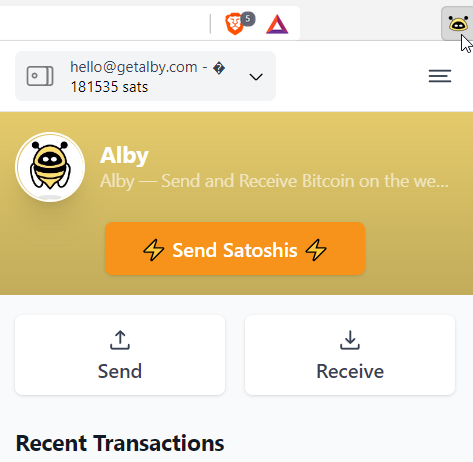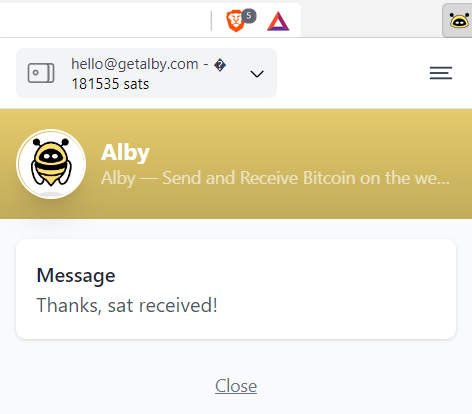How to Send Bitcoin on Medium Using Alby
At Alby, we are providing easy-to-use tools to transact Bitcoin instantly. Alby creates a seamless user experience for bitcoin payments. In this article, we do a quick explainer of how you can send Bitcoin using Alby to a writer on Medium.

At Alby, we are making payments smarter and simpler for everyone by providing easy-to-use tools to transact Bitcoin instantly and seamlessly. Our open-source browser extension, Alby, creates a seamless user experience for bitcoin payments.
In this article, as part of our Value 4 Value series, we do a quick explainer of how you can send Bitcoin using Alby to a writer on Medium.
Step 1: Read the article of the Medium writer you want to send bitcoin to

When Alby detects the Lightning Address in the bio, it will wake up and open its eyes.

The Lightning Address looks like an email address and is accompanied by a lightning symbol -

Here, hello@getalby.com is the Lightning Address.
Step 2: Click on the Alby extension

Your wallet will drop down with the bio of the writer and the list of your recent transactions.
Step 3: Click on ‘Send Satoshis’

The details of who you’re sending the payment to and a description will appear.
- Choose the number of sats you want to send
- You can leave your name, email or comment, if you see those options.* Comments can be a great way to share your appreciation, initiate conversation or leave your personal info should you wish to be contacted by the receiver.
Step 4: Click on ‘Confirm’

Well, that's all. Unless you'd like fries to go with it 😜
Check out how you can send sats on various social media platforms. Remember, like email addresses, Lightning Addresses are interoperable. You can get one from Alby or any of these services that support it.
*You won't see these options in all cases as that depends on whether the wallet or service you are using has implemented the LNURL spec. Different wallets and services may implement different sets of protocols since these are optional. However, they maintain compatibility with each other except when a service requires a new functionality.